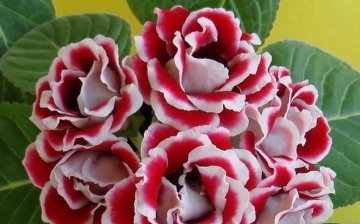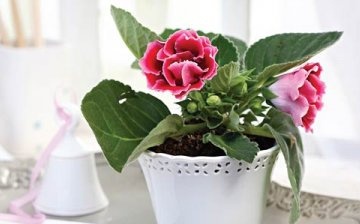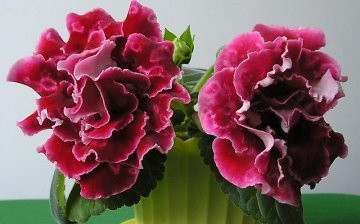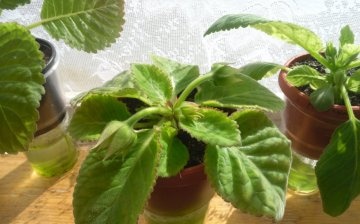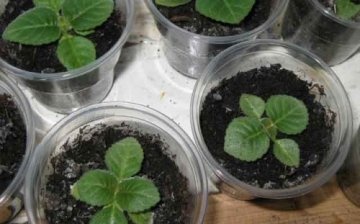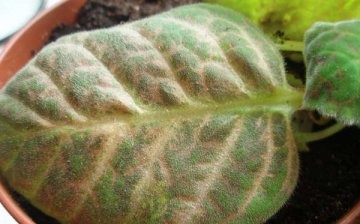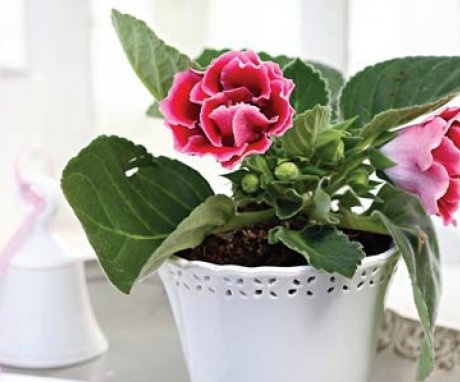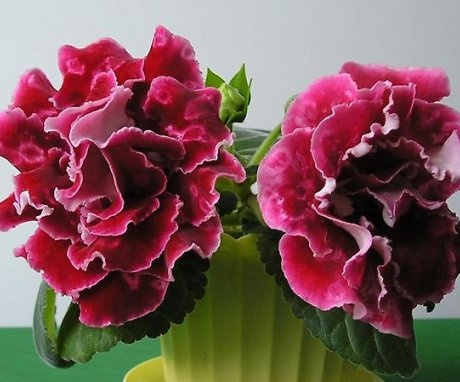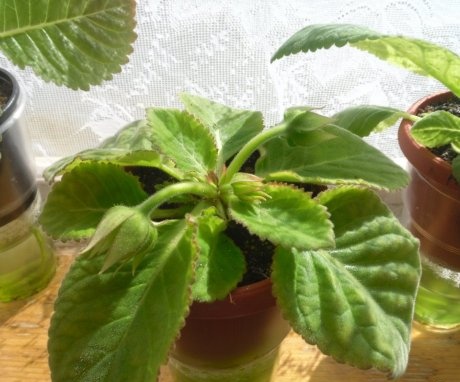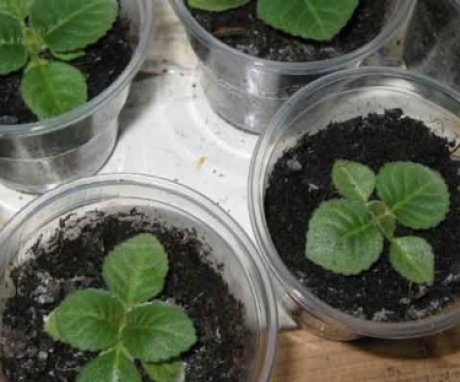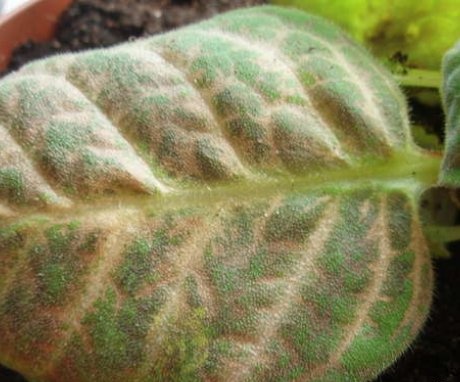Growing gloxinia from seeds: seed preparation, sowing and care
Gloxinia is one of the most beloved and common plants among flower growers. Large bright flowers, unpretentious plant were highly appreciated. Its popularity is growing, as every year more and more new varieties with fancy gramophones and colors appear.
Content:
- General information about gloxinia
- Care
- "Rest period" in gloxinia
- Growing from seeds
- Diseases and pests
General information about gloxinia
Gloxinia is perennial a herb that belongs to the Gesneriaceae family. Its homeland is the rainforests of Brazil. Where the rainy season takes place every year. During this period, the plant accumulates nutrients and moisture in the tuber and blooms profusely.
When resting time comes, gloxinia sheds its leaves and "falls asleep".
Such a system of life is common for indoor, domesticated plants. Every year, in the winter, the flower leaves for a dormant period. At this time, the pot is transferred to a dark place and sometimes watered.
Flower features:
- Gloxinia is a small shrub with fleshy, succulent stems.
- On the petioles of medium size there are large, oval-shaped leaves. They are painted in a dark green or green tone with pronounced light green veins from the upper part, the lower side is light green.
- On high peduncles, large simple or double flowers are formed, the color of which depends on the plant variety.
- Their shape resembles a gramophone.
- The root system is a rounded tuber.
Care
Gloxinia is a photophilous plant, but it does not tolerate heat and direct sunlight. Therefore, it must be placed on a well-lit windowsill with light shading. In dark places, the stems of the plant stretch out and become thin, and flowering is poor or absent altogether.
The air temperature during the growing season should be between 18-25 degrees Celsius.
When the temperature rises above 28 degrees, the plant slows down in growth, as it receives strong overheating. At the same time, the leaves and flowers begin to fade. It is recommended to place the plant pot in a cooler place.
Watering the plant:
- During growth and flowering, it is necessary to water the bush regularly and abundantly.
- Gloxinia also needs constant humid air in the room where it grows. To do this, it is recommended to install a humidifier or regularly spray the air around the flower with a spray bottle.
- It is impossible to spray the flower itself; if water gets on the leaves or flowers, they may begin to rot.
Gloxinia needs regular dressing... To do this, use fertilizers for flowering indoor plants, which must be applied once a week, from mid-spring to late summer. Feeding high in nitrogen should be avoided as this can lead to violent leaf growth and a decrease in flowering.
"Rest period" in gloxinia
Gloxinia is one of those flowers that rest every year in winter. This is especially important for mature plants. In early October, the leaves begin to wither at the flowers, the stems dry out. For varieties that bloom in the fall, there are several preparation steps.
In mid-September, you can start to reduce the amount and frequency of watering, as well as remove all feeding... Transfer the pot to a shaded place. Gloxinia will begin to move into a dormant state. When the leaves and branches on the plant are dry enough, they are completely cut off.
The pot is placed in a dark, cool place where the ambient temperature is in the range of 10-13 degrees Celsius.
The plant should be in this state until February. Gloxinia care at rest consists of watering, which must be carried out 2 times a month with warm water. At the same time, try to prevent water from getting on the tuber.
For annual gloxinias, in which the tuber has not yet had time to form, a rest period is not needed. They need to provide adequate lighting and watering. The air temperature should not exceed 19 degrees. In such conditions, the shoots will not stretch and become thinner.
In late January or early February, gloxinia tubers begin to wake up, this can be seen by the small sprouts that have appeared on them.
Recommended during this period transplant plant in a pot with new fertile soil. Moreover, after planting, the top of the tuber should be slightly visible on the surface. After transplant watering it is necessary to start in 5-7 days so that the tuber does not start to rot. After this period, the plant is watered moderately for another 1-2 weeks, and then they switch to normal mode.
Growing from seeds
Gloxinia multiplies with the help seed and leafy cuttings. Seeds can be purchased at any flower shop or online. Despite the fact that this process is quite laborious, the result is a large number of plants that will give the first flowers in six months.
Reproduction by seeds:
- In order for the bushes to bloom in early summer, sowing seeds must be done in January. To do this, you need to prepare a container, drainage and soil.
- Any plastic container is suitable, no more than 10 cm high and at least 5 cm high.
- Drainage is laid out at the bottom, and loose fertile soil is poured on top, this can be purchased at a flower shop.
- Before placing the seeds, water the soil so that it is moist and the seeds stick to it easily.
- After sowing, a greenhouse must be built over the container.
- The seedlings are transferred to a well-lit and warm place, the greenhouse is periodically ventilated, and the seeds are watered with a spray bottle.
- Seedlings will appear in 1.5-2 weeks.
- When 2 adult leaves appear on the sprouts, they can be dive in small groups in separate containers. Such picks will need to be made 2-3 more times when the bushes grow and begin to touch the leaves.
- The last time each gloxinia is planted in separate small pots or glasses for further development.
- When the buds are tied on the bushes, the plant can be transferred to a small pot.
Leafy cuttings can be cut from the bush during the entire growing season. If you start rooting in early summer, then by the end of the season the young bush will give flowers. A healthy large leaf is suitable for the cutting, which is cut in such a way that only 2-3 cm of the petiole remain.
It can be rooted in water or river sand. In the first case, the petiole is lowered into the water so that the fox does not reach it. It is convenient to do this on a deep plate, laying the leaf plates around the edges and lowering the petioles in water.
Rooting takes place within 0.5-1.5 months.
When rooting in river sand above the leaves, it is necessary to make a greenhouse or cover each separately with a glass or jar. It is necessary to put foam or wood chips under the sheet plate so that it does not come into contact with the sand. When a tuber forms on a leaf, you can transplant in a small pot.
Diseases and pests
Gloxinia is susceptible to fungal diseasesthat can occur when the soil is waterlogged or during sudden temperature changes.This process must be followed and when a disease appears, use special means or completely cut off the upper part of the bush, and disinfect the tuber in a manganese solution and transplant in a new pot, with fresh drainage and soil.
Also, diseases can occur with improper plant care.
For example, yellowing of the leaves may mean that there is not enough magnesium in the soil or that the bush is overmoistened when watering. Drying of the leaves at the edges or the appearance of dry spots on the leaf blade indicates dry air and burns from direct sunlight.
Growing Gloxinia from seeds at home is quite a simple matter, as a result of which a large number of healthy flowering bushes are obtained. Easy maintenance and variety of varieties made it indispensable in interior decoration.
More information can be found in the video.



